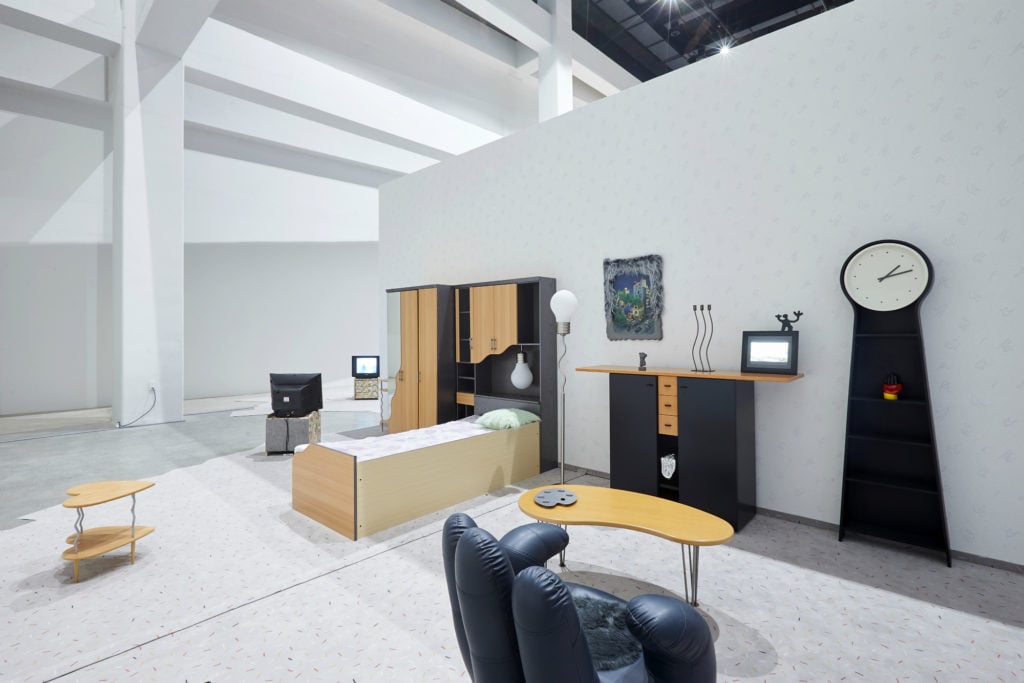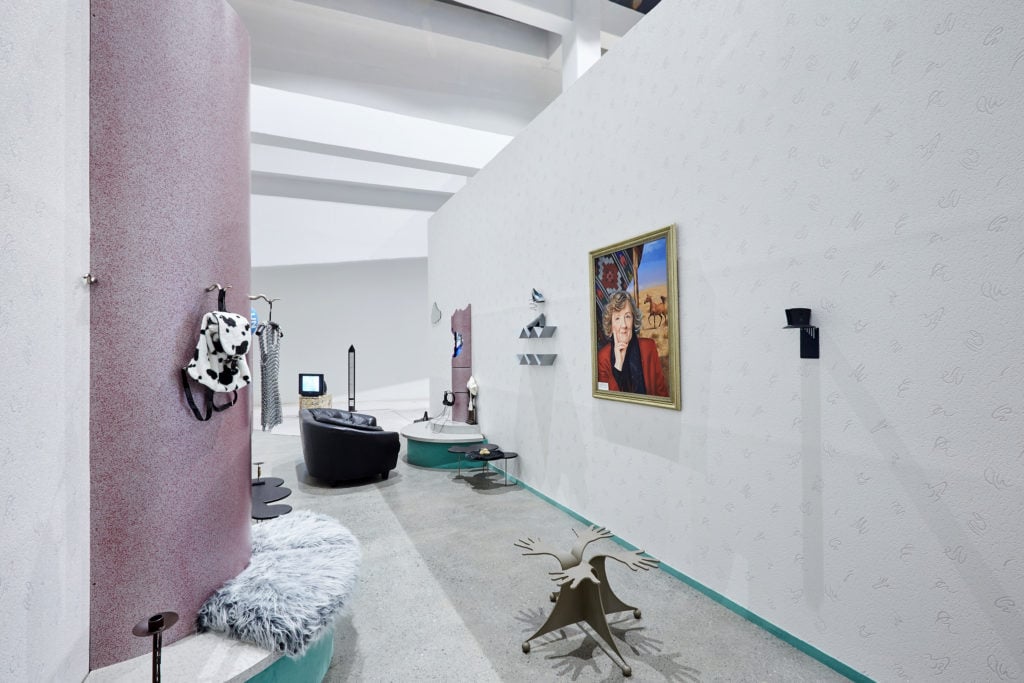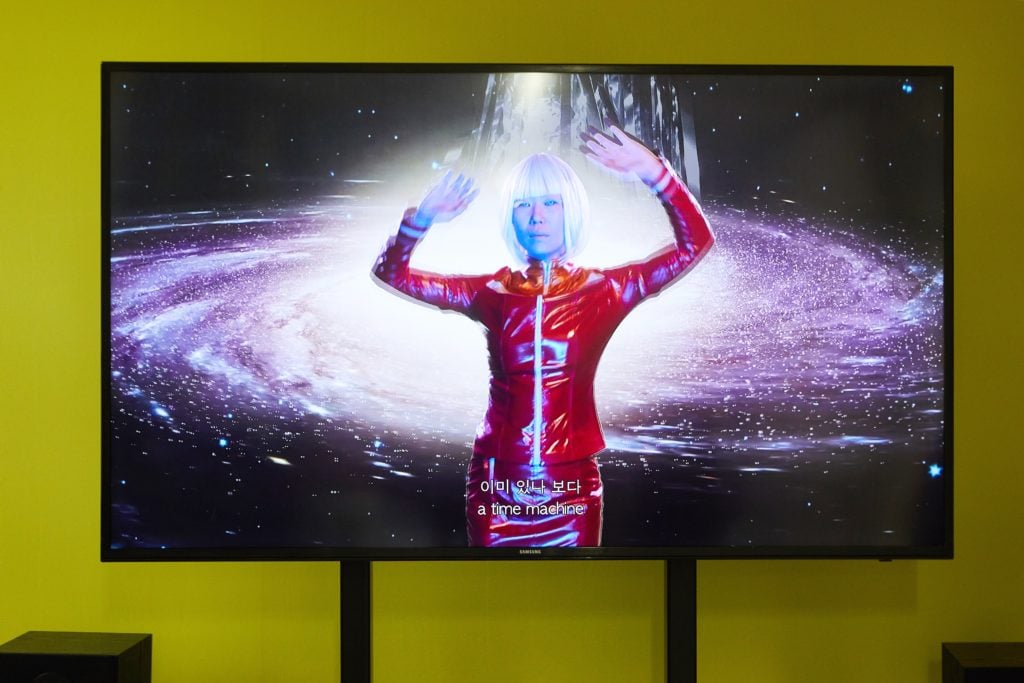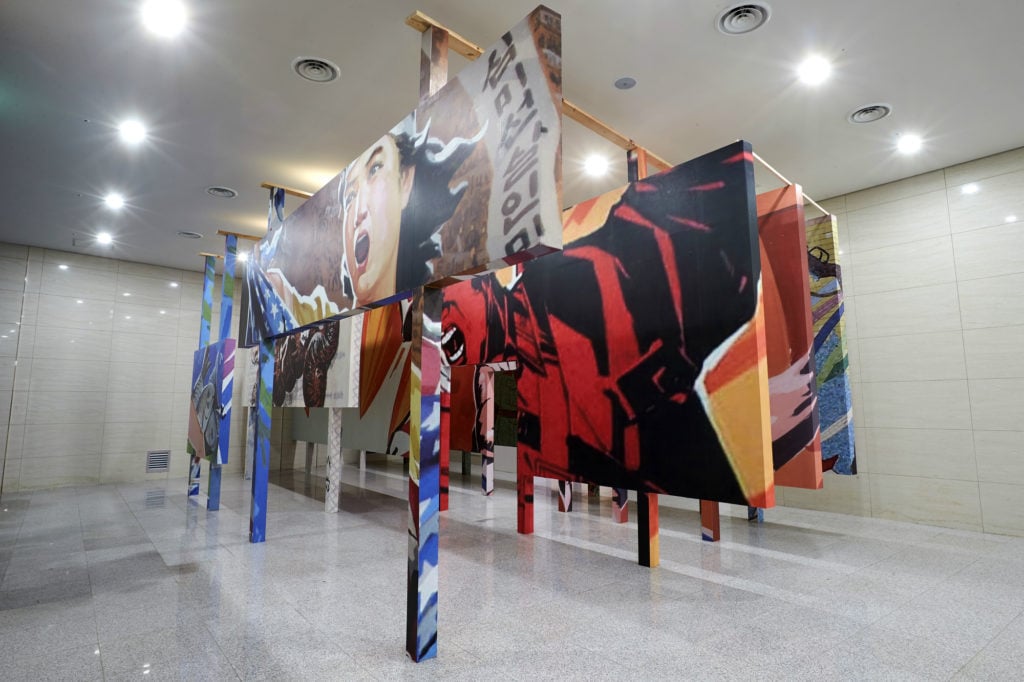Reviews
Biennials Have Been Accused of Being Too Unwieldy—So the Busan Biennial Hired an Editor Instead of a Curator
Jörg Heiser's debut biennial is (perhaps unsurprisingly) tightly edited and well argued.

Jörg Heiser's debut biennial is (perhaps unsurprisingly) tightly edited and well argued.

Hili Perlson

A year ago, the writer and editor Jörg Heiser penned a think piece about the villainous role that curators seem to play in the contemporary imagination. Heiser, the former co-editor of Frieze magazine and current director of the Institute for Art in Context at the University of the Arts in Berlin, was motivated by what he observed as “curator-bashing.” The phenomenon, he observed, was happening both in fiction (the portrayal of the ridiculous curator in the award-winning Swedish film The Square) and real life (the offensive waged against Chris Dercon before he stepped down as the director of the Volksbühne theater in Berlin).
Heiser described the “lose-lose” situation curators often find themselves in today, with too many audiences to please on too many fronts. “Curators have become the scapegoats for society’s failure to confront its moral dilemmas,” he wrote. He concluded on a stubborn note: “It’s time for curators to… live with their bad reputations and just get on with it. If the devil has all the best tunes, curators should stage all the best shows.”
A few months later, Heiser was announced as the curator of this year’s Busan Biennale (with Cristina Ricupero as its artistic director), which opened to the public in South Korea’s second city on September 8.
Did he listen to his own advice?
Heiser has dodged several pitfalls of the mega-shows he reviewed as a writer. Instead of having to cover marathon-length distances, Heiser and Ricupero have put together a two-venue exhibition featuring work by nearly 60 artists. The entire show can be viewed in a day without compromising even the video- and time-based works.
Heiser has also avoided cryptic art-speak. Instead, he has opted for straightforward subversion. The exhibition, titled “Divided We Stand,” gathers works dealing with split territories around the world and the divisions between people that nation-states rely on to define themselves. As a German curator staging a show in South Korea, Heiser wisely draws on his experience of life in a formerly divided country and the after-effects of the Cold War on reunified Germany.

Henrike Naumann, 2000 (2018), installation view at the 2018 Busan Biennale.
An exquisitely provocative installation by the young German artist Henrike Naumann steals the show. In 2000 (2018), the artist looks at the youth subcultures that emerged in post-reunification East Germany. She raises searching questions about the popularity of neo-Nazi sentiments in places such as Zwickau, her hometown, which was also the infamous hideout of the neo-Nazi terrorist group NSU. Naumann asks whether the far-right is exploiting the failed hopes of citizens of the former GDR who were expected to adjust to an entirely new, capitalist system overnight.
Rooms furnished with mass-produced imitations of Memphis designs signal the chasm between aspiration and reality in East Germany after 1989. The Italian design was the dernier cri for those with the money to embrace Western consumerism in the early ’90s. Screens and TVs installed on the veneered shelving systems play videos in which the artist casts herself as a techno-head at a rave, or as a member of a neo-Nazi gang. A sound piece culls excerpts from a speech by German-Ghanaian rapper Denis Cuspert (aka Deso Dogg), who joined Islamic extremists in Syria, where he was killed in January.
Another work that makes an impact is South Korean artist Minouk Lim’s It’s a Name I Gave Myself (2018), an installation mimicking the set of a TV studio filled with cryptic mementos and mannequins. On screen, heart-rending clips from an ’80s TV show play in a loop, featuring Koreans who were separated from their families as young children during the Korean War. Holding wooden tablets with a number, they have less than a minute to answer questions by the presenter that might provide cues to locate their long-lost family. Most don’t know their exact age, name, or much about their family and answer with the kind of vague memories of details that stick in a child’s mind.
Both pieces are installed in the newly opened Museum of Contemporary Art Busan, which is the main venue for the biennial. The second, more difficult venue is the Modernist building that formerly housed the Bank of Korea, where works are hardly given the space they need and the viewing conditions at times feel inappropriate for a big biennial. This is perhaps the one element that suggests that Heiser is less interested in spaces than content, as one could expect from someone whose main tool is the written word.
Overall, Heiser and Ricupero have organized a tightly edited biennial: There are no redundancies, it is well paced, and big statements are buttressed by supporting arguments. There’s also just the right amount of comic relief. In other words, it feels like a well constructed essay. One weakness, however, is that there are few surprises, and many—too many—pieces that have been shown or even commissioned by recent biennials, though probably not on view in Busan before.

Minouk Lim, It’s a Name I Gave Myself (2018), installation view at the 2018 Busan Biennale.
But in one case at least, revisiting an older work feels necessary. Mother’s Day (2006–8) is a three-channel installation by Israeli artist Smadar Dreyfus that uses sound recorded at a location known as “Shouting Hill” in the cease-fire zone between Israel and Syria in the Golan Heights. The area is home to the Syrian Druze community, which was separated by the Israeli occupation of the area. In a rare agreement between the warring countries, a program was created that granted Druze youth living in Israel-controlled territory permission to attend Damascus University in Syria. On Syrian Mother’s Day, students would go to the hills and take advantage of the acoustic conditions of the topography to communicate with their mothers on the other side. Students could only cross the border once a year.
The result is a highly visible, public display of care and familial respect watched over by the military on either side, including UN peacekeepers. The Israeli artist, who stumbled upon the event by chance, also notes that since the advent of the internet and cellular communication, shouting at the hills has taken on new meaning as a “public performance of resistance.”

Smadar Dreyfus, Mother’s Day (2006-8), video and sound environment, 2018 Busan Biennale. Image courtesy of the artist.
Dreyfus’s work gains an additional meaning today: It has become a snapshot of a moment in time that might never happen again, as the Syrian government lost control of much of the area bordering the occupied Golan Heights in the Syrian War, and students from there stopped traveling to Damascus to study.
Though it may not be the ultimate retort to the multi-headed, sprawling events that have become the norm for big-budget biennials, Heiser’s Busan Biennale is an affair that feels like it was made for viewers. It also an exhibition where the art is not corseted into a curatorial J’accuse! The way artists convey, filter, and comment on political divisions around the world is enough to make a point. It’s not a new idea, and the biennial does have a slightly antiquated feel to it. But boy is it refreshing.
“Divided We Stand,” the 2018 Busan Biennale runs through November 11, Busan, South Korea.

Henrike Naumann, 2000 (2018), installation view at the 2018 Busan Biennale

Minwhee Lee and Yun Choi Viral Lingua (2018), installation view at the 2018 Busan Biennale.

Gabriel Lester, The Conditioning (2018), installation view at the 2018 Busan Biennale